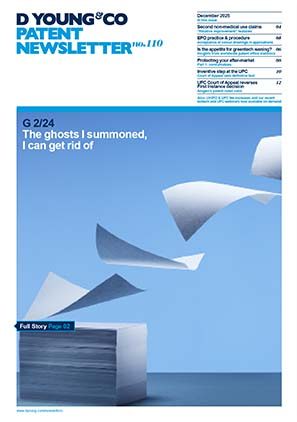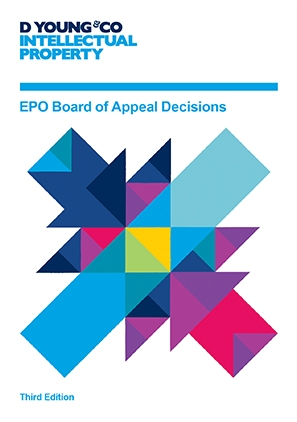Innovation, patents and tax relief in the world of fintech
With the world slowly opening up again after the Covid-19 pandemic, one change which is likely to stay with us is the move from cash to digital transactions. This shift was already underway but was accelerated by the pandemic. The highly infectious nature of the virus meant people were reluctant to exchange physical notes and coins with each other when an option involving less person-to-person contact (for example, a contactless card or mobile payment) was available. National lockdowns also forced many people to shop online (where digital payments are the only way to pay) rather than in traditional brick-and-mortar stores.
More choice, more innovation
The choice of digital payment platforms is ever growing. As well as traditional card payment networks (such as those run by Visa, Mastercard and American Express), there are also a huge number of newer entrants to the financial technology (fintech) market looking to play their part in the cashless societies of the future through secure, easy to use and innovative technologies.
Some of these technologies, such as Apple Pay and Google Pay, make use of existing card payment networks. Others, such as PayPal and GoCardless, enable direct bank-to-bank payments (such as via Direct Debit) and thus do not need to use existing card payment infrastructure. There is also the ever growing array of different cryptocurrencies (although, for the moment at least, the volatile nature of these means they tend to be more attractive to market speculators than to mainstream customers looking to make payments).
Another ongoing development is the expansion of open banking. The idea of open banking is to enable a third party, with the permission of a user, to securely access information (for example, balances and transactions) and perform certain operations (for example, making payments) associated with bank accounts held by that user. On the customer side, this has allowed for the development of apps such as Plum and Emma which allow users to see and manage current accounts, savings and investments from multiple different providers all in one place. Open banking is also being used to enhance the offerings of existing payment platforms for businesses. For example, Instant Bank Pay from GoCardless uses open banking to optimise the collection of one-off payments from customers.
Maintaining a competitive edge
With such an array of products out there, fintech providers are looking to do all they can to differentiate themselves over the competition. The standardised way in which much of the underlying payment infrastructure works (such as card payment networks, interbank networks and open banking APIs) means much of the innovation is in, for example, the way data is packaged and organised to make efficient use of that infrastructure, the nature of the user interface and, of course, the variety and quality of services offered by a single platform. Platforms which get these innovations right will be looking to reap big rewards and will thus be keen to do all they can to keep copycat competitors at bay.
Of course, one way to do this is to simply keep the technology secret. However, this isn’t always possible. Products can be reverse engineered, software code can be leaked and highly visible features (such as those related to user interfaces) can all-too-often be easily replicated.
Another approach, therefore, is to seek patent protection for fintech inventions. In exchange for explaining to the world how the technology works, a granted patent covering a particular fintech technology can be legally enforced against competitors to stop them copying it.
Patents with benefits – corporation tax relief
Obtaining patent protection can also have other significant benefits. For example, comprehensive patent portfolios can help make a company more attractive to investors. There are also a number of so-called “patent box” schemes throughout the world which aim to incentivise innovation and patent filing through tax relief.
For example, the UK Patent Box scheme allows qualifying profits associated with exploiting patented inventions to be subject to a reduced rate of corporation tax of 10% (rather than the current 19% standard corporation tax rate in the UK). Similar schemes exist in, for example, France (with the French “IP Box” scheme enabling a corporation tax rate of 10% instead of the standard 26.5%) and The Netherlands (with the Dutch “innovation box” scheme enabling a corporation tax rate of 9% instead of the standard 25%).
Obtaining a patent – things to consider
A patent is a national monopoly right. This means that in order for you to obtain a patent, a patent office examiner in the country of interest reviews the patent application to ensure it meets the requirements of the national law. As you might expect, different countries have developed different laws in respect of patents.
In the area of fintech, successfully obtaining patent rights depends on whether the relevant patent office views your patent application as a method of doing business or a genuine technological advance. In most patent offices, methods of doing business are not allowed to be patented.
The key question then becomes: is what I am trying to protect a method of doing business?
The way that this is answered is usually dependent upon two factors. First, the national law of the country of interest. In some countries, such as Japan, the US, and more recently China, the prohibition against business method patents is generally overcome if the legal scope of protection is tied to a computer (or the like) which performs the business method. This makes the prospects of obtaining a patent in the area of fintech slightly easier.
However, in other jurisdictions, such as in Europe, there is more emphasis in analysing the technological advance of your innovation. So, it is generally harder to obtain patent protection for your innovation in the area of fintech.
Accordingly, in order to obtain a good commercial outcome for your investment, you must consider the law of the country of interest and balance your risk of not achieving your desired outcome against the cost of trying.
The second and arguably most important factor is that your patent application must be very carefully written in the first place. As your patent application is your chance to explain your idea, the patent application must focus on the technology rather than any administrative steps or commercial advantages that your product has.
Ultimately, the patent has commercial value as it is protecting a unique feature of that product. However, the patent application must concentrate on the unique technical features and advantages associated with the product rather than any commercial advantages. The patent application must thus dissect the product and focus on the technological advances such as improving data resilience, efficiency of network usage, more reliable data analysis, easier user interaction or the like. A patent application that focuses on the technological advances will provide you with the best chance of achieving your overall goal; obtaining a patent, even in the most challenging jurisdictions for business method patents.
Example
To illustrate the point, imagine that you have a commercial product that automatically retries failed payments on a different date without staff having to intervene. Clearly this is commercially very useful and is a good differentiator from other products offered by competitors. However, from a patent perspective, rather than focussing on the commercial impact this product has, it is important to focus on any technical advantages that exist within this product.
For example, instead of simply sending a separate retry request to each bank for each customer, requiring multiple acknowledgements, your product may package messages to one particular bank identifying all the retry requests for all customers for that day. This packaging may be done in a unique manner which only requires one message from your product and one acknowledgement from the payees’ bank for possibly thousands of retry attempts rather than the thousands of retry messages and acknowledgements as happened before. This packaging of messages therefore results in a more efficient use of network resources.
This is a technical advantage that allows your product to work efficiently and provide you with a commercial advantage. The mechanism of the packaging the messages and its associated technical advantage will need to be described in the patent application. By emphasising the technical advance of your product, the likelihood of a patent examiner alleging that the idea embodied by your product is simply a new business method is reduced. This increases the likelihood of obtaining a granted patent.
Conclusion
In the growing and highly competitive fintech market, innovation is a key differentiator between various products and services. It is thus more important than ever to invest in protecting your innovation. Obtaining patent protection can be a very effective way of doing this. However, in order to maximise your prospects of success in obtaining a granted patent right, it is necessary to spend time at the outset considering what the technical advantages are of your product and service and to focus your patent application on those. As a reward for that, if you get your granted patent, you will obtain a monopoly right stopping new entrants into your market. You may even obtain a tax break for doing so.



